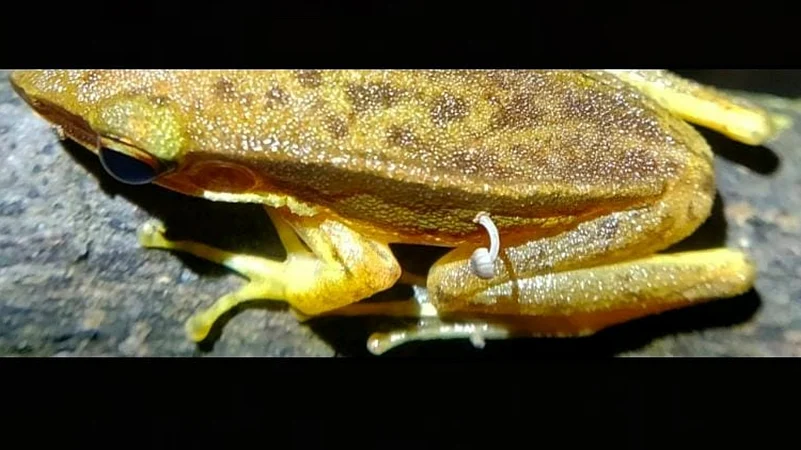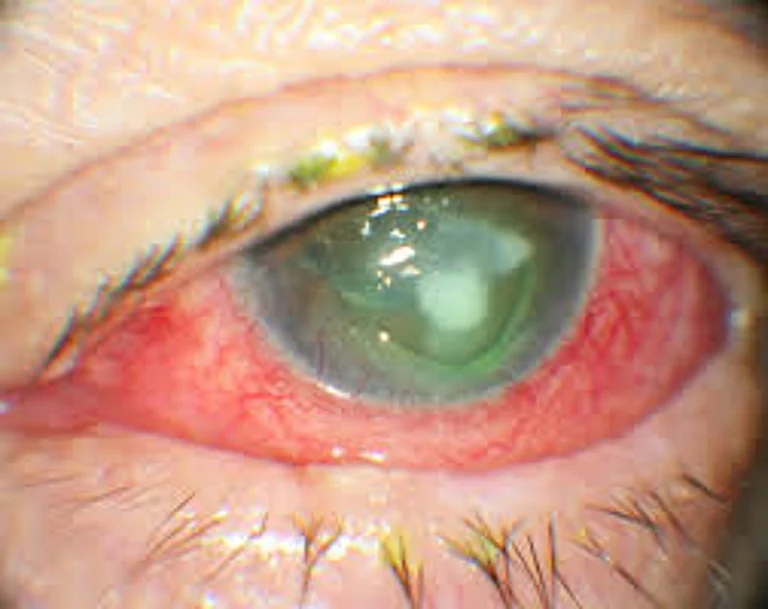In the verdant foothills of the Western Ghats in India, amidst a backdrop of misty rain and lush vegetation, Lohit Y.T. embarked on a quest with his companions over the summer. Their mission? To delve into the world of amphibians and reptiles. Little did they know, their herpetology expedition would lead to an unexpected discovery in the realm of mycology.
"We were five of us, busy searching for the species and avoiding leeches," recalled Mr. Lohit, a river and wetlands specialist at World Wildlife Fund-India.
Their journey, intended to uncover the secrets of amphibian life, took an intriguing turn when they stumbled upon a peculiar sight in a roadside pond. Amongst a plethora of Rao’s intermediate golden-backed frogs, one frog stood out. Perched delicately on a twig, it bore a peculiar growth – a tiny mushroom protruding from its flank, akin to an otherworldly fungal appendage.
Fascinated by this anomaly, Mr. Lohit and his companions documented their discovery, which would later be shared in a note published in the journal Reptiles and Amphibians.
The revelation sparked a flurry of speculation among citizen scientists and mycologists, who likened the fungal hitchhiker to a type of bonnet mushroom. This observation raised profound questions: How did a mushroom, typically associated with decaying plant matter, come to sprout from a living frog?
Identifying the mushroom proved to be another challenge, as mycologists stressed the importance of additional evidence beyond photographs. Sydney Glassman, a fungal ecologist at the University of California, Riverside, emphasized the necessity of genetic analysis for accurate identification.
Christoffer Bugge Harder, a mycologist at the University of Copenhagen, suggested that the fungus resembled a Mycena species, known for its adaptability in various ecological niches. Dr. Harder's research revealed the remarkable versatility of Mycena, capable of thriving on both decaying wood and living tree roots.
As speculation abounds, one thing remains certain – the discovery underscores the intricate web of life and the mysteries that lie within nature's tapestry. Sonali Garg, a herpetologist at the Museum of Comparative Zoology at Harvard, emphasized the importance of such revelations in igniting curiosity and prompting further exploration.
"Reports like these are important," remarked Dr. Garg. "Maybe it will make people go out and look more closely."

The intricate relationship between fungi and amphibians intrigued experts, shedding light on the diverse interactions within ecosystems. Matthew Smith, a fungal biologist at the University of Florida, noted the rarity of such occurrences, emphasizing the need for further investigation.
While the frog appeared unharmed, questions lingered about the potential implications of the fungal growth. Despite assurances from experts that the fungus was likely non-pathogenic, the full extent of its impact on the amphibian remained uncertain.



























